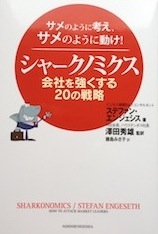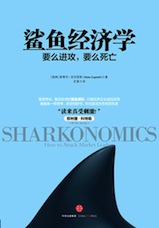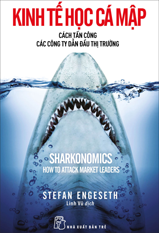Pr-industry – a sacred cow?
I wrote a debate article “PR industry – a sacred cow?” for the Swedish magazine Dagens Media: “Pr-branschen – en helig ko?.” That article started a strong debate in the whole communication industry of Sweden. Since I like it to spread the word outside of our Swedish “cow field,” here is a Google translation of the article.
“PR industry – a sacred cow?”
Stefan Engeseth addressed in his latest book severely criticized the public relations industry – but unlike the rest of the world meets the book of silence in Sweden. “Scales no claim that the so-successful public relations industry may lose ground to a growing advertising industry?” He writes.
All the monkeys in the media, according to Calle Schulman in a debate-article in Dagens Media. The issue is not about public relations industry is full of holy sacred cow? Nobody seems to question the public relations industry, just as India’s sacred cows. An industry that make their living by selling poodles deserve well a colic of aphorism?
2002, Al Ries succébok “The Fall of Advertising & the Rise of PR”, which shook the advertising world in the past. Recently at Cannes Lions I released my latest book “The Fall of PR and the rise of advertising”, which deals with public relations industry’s development, and perhaps it’s fall?
The first person that came up to me was an CEO of Burson-Marsteller in India, who said he had read the book. He had not had a wink of sleep at night because he was so upset. I expect a name-calling, but instead to scold me, he thanked me for raising questions about public relations industry’s development. The book’s theme was, therefore, no sacred cow in India. Internationally there has been a great deal about the book, but almost none in Sweden. I wonder why? No one dares to say that the most successful public relations industry may lose ground to a growing advertising industry?
Journalists have told me that they feel they are kidnapped by the public relations industry. If they do not write the right things so they may not have the information they need to do their job. Profitability of marketing public relations is good, but something goes wrong so it will be even more profitable to sell the “crisis poodles” to panic-stricken clients. The profitability of hunting public relations agencies have sold their press clippings per kilogram. With increased competition becomes PR even more visible. Research shows that young people today are so accustomed to the media like a lie detector to determine which articles are generated by public relations or not.
Successful public relations is often difficult to demonstrate the practical value of the venture, making it difficult for the buyer valued. PR agencies have generally so low knowledge in branding and strategy that value of their work often stops at the price per kilo of press cuttings.
Before, the media were the “the third party” that told the truth.Today, 100 million bloggers stop the public relations lies in a few hours. PR industry can not even spell Internet and its knowledge of social media will only work successful if the old media was based on a controlled monologue.
What neither Murdoch, Stampen or Bonniers or understands, is that “content still is king.” Bonnier’s new Communications Director Mårten Lyth ask in Dagens Media: “Who will pay for quality?” The short answer to that question is the advertisers. But advertisers are becoming their own media channels. In the same issue of the magazine interviewed several major advertisers on how they work with social media. Many are 4-6 years after the reality.
Why? Because they can (read affordable). But the media can not afford neither monkeys or poodles.
Around the corner, we see brands as Tommy Hilfiger, Diesel and Audi opened their own television channels. Many, however, offer such a low quality content that it can harm the brand. Ikea could with its millions of fans could be a future media player. If brands are to succeed to deliver good content will depend on whether the current media providers are prestigious enough resolve to offer their skills to those who want to pay for quality.
The goal of my book is not to slaughter the sacred cows. I hope however that it can bring constructive discussions spite the fact that so many are living on milk.
















